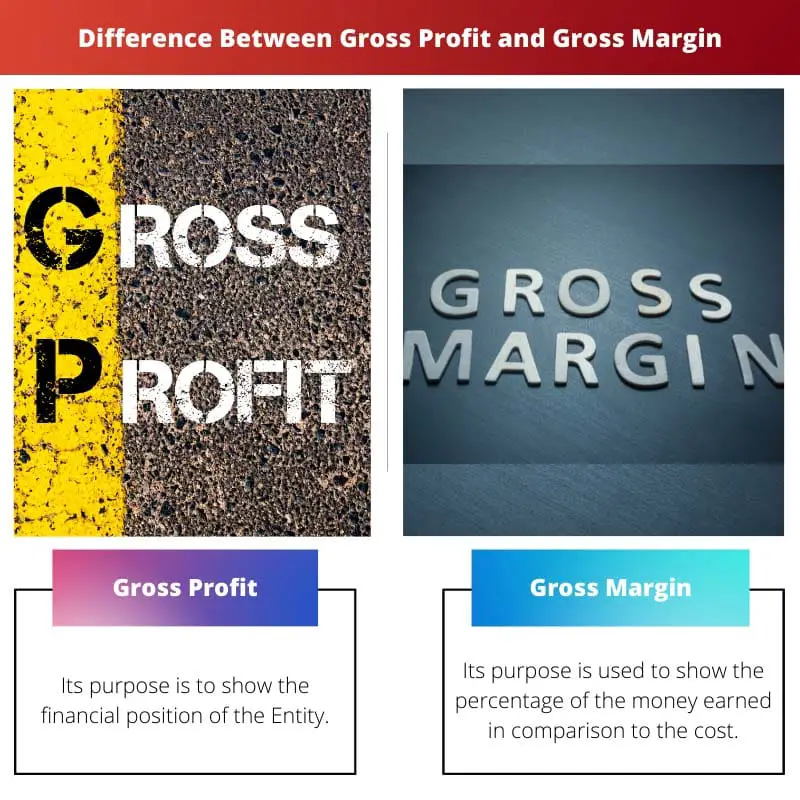There are lots of terms that are used interchangeably in the world of revenues and sales. Such two terms, Gross Profits, and Gross Margin, are used as the measure of sales. But they are very different from each other and have different purposes for representing the prices. They both are used to show the probability of a business working as a key financial metric.
Key Takeaways
- Gross profit measures the total revenue minus the cost of goods sold (COGS), while gross margin is the percentage of revenue remaining after accounting for COGS.
- Gross profit is a monetary value, whereas gross margin is a percentage that represents efficiency.
- Businesses use gross margin to compare their profitability with competitors and industry standards, while gross profit helps assess overall financial performance.
Gross Profit vs Gross Margin
Gross profit is the amount of money a company earns from selling its products or services, minus the cost of producing those products or services. Gross margin is a more useful metric than gross profit because it allows for the comparison of businesses of different sizes and industries.

Gross Profit is a financial and value metric that helps a company to determine the financial goals and improvements in their company’s production process. It is calculated as the Cost of Goods Sold subtracted from Net sales revenue. It is stated in numbers and shows how much is company produces in terms of revenues which are they generating from their selling of the goods.
Gross margin is basically a measure of operational efficiency for the profits generated by a particular business. It is used in comparing organizations. Stated as a Percentage, the Gross margin is calculated as Gross Profit by sales revenue multiplied by 100. It is used in Product line descriptions. Any business or organization has the aim to gain a higher gross margin as much as possible.
Comparison Table
| Parameters of Comparison | Gross Profit | Gross Margin |
|---|---|---|
| Definition | Gross profit shows that how much the company earned from the sales of their products after paying all the costs of producing their products and services. | The gross margin percentage is used to show the revenue the company is generating from the costs which are used in producing its products and services. |
| Product line Determination | It is not used in the Product Line. | It is used in the Product line Determination. |
| Purpose | Its purpose is to show the financial position of the Entity. | Its purpose is used to show the percentage of the money earned in comparison to the cost. |
| Calculation | It is calculator as Net Sales Revenue – Cost of Goods Sold | It is calculated as Gross Profit / Sales Revenue x 100 |
| Benefits | Its benefit is that it is used to determine the cost of the goods. | Its benefit is that it helps to determine the price of goods and services. |
What is Gross Profit?
Gross Profit is obtained when all the costs of producing the products and services belonging to the company, such as manufacturing and selling, are deducted from the revenue generated. It shows the actual figure that a company generates. It indicates how well a company is making use of the labor, manufacturing the goods, and how well the services are being offered to the clients.
If one needs to know the company’s financial performance, then one can know them by looking at the gross profits. They help to know better how much costs are needed further to generate revenue. The gross profit decreases in the case when the cost of sold goods increases, and thereby there will be less money left for the business expenses, such as operating expenses, and vice versa.

What is Gross Margin?
Gross Margin is also called Gross profit margin and is stated as percentages and ratios. They are shown as the profits gained by the company after excluding the selling, general, and administrative (SG&A) costs. Every organization wants to have a higher gross margin which can further help in paying various costs and debt obligations.
It is a financial metric that indicates that a company has more money to pay for additional costs, such as hiring extra labor, investing in future options, and operating costs. It can not be a good option for price strategy but is definitely helpful in showing the management of the company’s revenue in upgrading the production of its costs and services.

Main Differences Between Gross Profit and Gross Margin
- Gross Profit is calculated as Net Sales Revenue – Cost of Goods Sold, whereas Gross Margin is calculated as Gross Profit / Sales Revenue x 100.
- Gross Profit is represented as a whole number, whereas Gross Margin is represented as a Percentage.
- Gross Profit is not used in the Product Line Determination, whereas Gross margin is used in Product line Determination.
- Gross Profit has a benefit in that it is used to determine the cost of goods, whereas Gross Margin has the benefit that it helps to determine the price of goods and services.
- Gross Profit shows the Entity’s financial position, whereas Gross purpose is used to show the percentage of the money earned compared to the cost.






